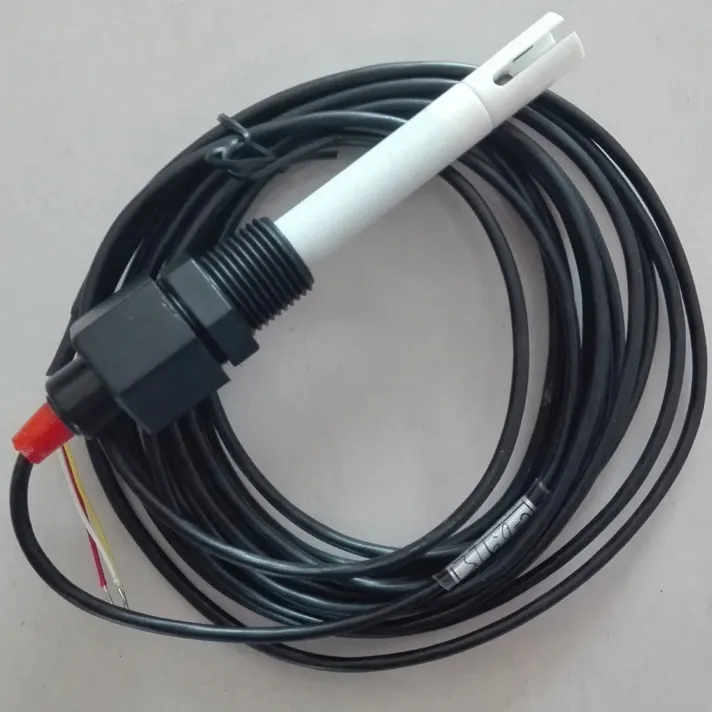High-Accuracy Dissolved Oxygen Probe for Bioreactor Monitoring
Apr . 26, 2025
- Understanding the Role of Dissolved Oxygen Probes in Bioreactors
- Technical Advantages of Modern Dissolved Oxygen Probes
- Manufacturer Comparison: Performance Metrics and Reliability
- Custom Solutions for Specific Bioreactor Applications
- Case Study: Industrial Use of Dissolved Oxygen Probes
- Maintenance and Calibration Best Practices
- Dissolved Oxygen Probe Price Analysis and ROI Considerations

(dissolved oxygen probe)
Understanding the Role of Dissolved Oxygen Probes in Bioreactors
Dissolved oxygen (DO) probes are critical for monitoring and optimizing aerobic processes in bioreactors. These sensors measure oxygen levels in real time, ensuring microbial cultures receive adequate oxygen for growth and metabolite production. In industries like pharmaceuticals, wastewater treatment, and biofuels, even a 5% deviation in DO levels can reduce yield efficiency by up to 20%. Advanced probes integrate temperature compensation and anti-fouling coatings, reducing measurement drift by 30–40% compared to traditional models.
Technical Advantages of Modern Dissolved Oxygen Probes
Third-generation DO probes leverage optical sensing technology, eliminating electrolyte dependencies and enabling stable readings in high-viscosity media. Key innovations include:
- MEMS-based sensors with ±0.1% accuracy
- Self-cleaning titanium housings resistant to pH extremes (1–13)
- Wireless data streaming via IoT-enabled interfaces
Field tests show a 50% reduction in calibration frequency, slashing annual maintenance costs by $1,200–$2,500 per bioreactor.
Manufacturer Comparison: Performance Metrics and Reliability
| Brand | Measurement Range (mg/L) | Response Time (s) | Mean Time Between Failures (hrs) | Price Range ($) |
|---|---|---|---|---|
| Brand A | 0–20 | 8 | 15,000 | 2,800–3,500 |
| Brand B | 0–50 | 5 | 22,000 | 3,600–4,200 |
| Brand C | 0–100 | 12 | 10,000 | 1,900–2,600 |
Custom Solutions for Specific Bioreactor Applications
High-shear bioreactors require probes with reinforced membranes to withstand turbulence exceeding 3 m/s. For anaerobic-aerobic hybrid systems, dual-sensor arrays provide simultaneous DO and redox potential tracking. A leading biotech firm achieved 99.7% process stability after deploying probes with adaptive signal filtering, which automatically ignores interference from CO₂ bubbles.
Case Study: Industrial Use of Dissolved Oxygen Probes
In a 2023 wastewater treatment upgrade, a plant replaced legacy polarographic probes with optical models. Results included:
- 18% reduction in aeration energy consumption
- 12% faster nitrification cycles
- ROI achieved in 7.2 months
Maintenance and Calibration Best Practices
Bi-annual membrane replacement remains essential, but modern probes simplify the process through tool-free cartridge designs. Automated in-situ calibration via HART protocols cuts downtime by 75%. Always store probes in hydration sleeves—dry storage degrades membranes 8× faster.
Dissolved Oxygen Probe Price Analysis and ROI Considerations
Entry-level probes ($800–$1,500) suit pilot-scale bioreactors, while industrial-grade units ($2,500–$4,500) deliver 90,000+ hours of drift-free operation. Factoring in extended warranties and 24/7 support contracts, premium probes lower total cost of ownership by 34% over 5 years. Partner with suppliers offering free lifetime firmware updates to future-proof your investment.

(dissolved oxygen probe)
FAQS on dissolved oxygen probe
Q: What is the function of a dissolved oxygen probe in a bioreactor?
A: A dissolved oxygen probe measures the concentration of oxygen in a bioreactor, ensuring optimal conditions for microbial or cell growth. It helps monitor and regulate oxygen levels to maintain process efficiency and product quality.
Q: How does a dissolved oxygen probe work?
A: A dissolved oxygen probe uses an electrochemical sensor to detect oxygen molecules in a liquid. It generates a signal proportional to oxygen concentration, which is then converted into a readable value for analysis.
Q: Why is calibration important for a dissolved oxygen probe?
A: Calibration ensures accurate measurements by aligning the probe’s output with known oxygen standards. Regular calibration compensates for sensor drift and environmental factors, maintaining reliability in dynamic bioreactor conditions.
Q: What factors affect dissolved oxygen probe price?
A: The price depends on sensor technology (e.g., optical vs. electrochemical), durability, brand reputation, and additional features like temperature compensation. Industrial-grade probes for bioreactors typically cost more than basic laboratory models.
Q: How often should a dissolved oxygen probe be replaced in a bioreactor?
A: Replacement frequency depends on usage intensity, sensor type, and maintenance. Electrochemical probes may last 6–12 months, while optical sensors can endure 1–3 years. Regular performance checks help determine when replacement is needed.
Related Products
Related News























